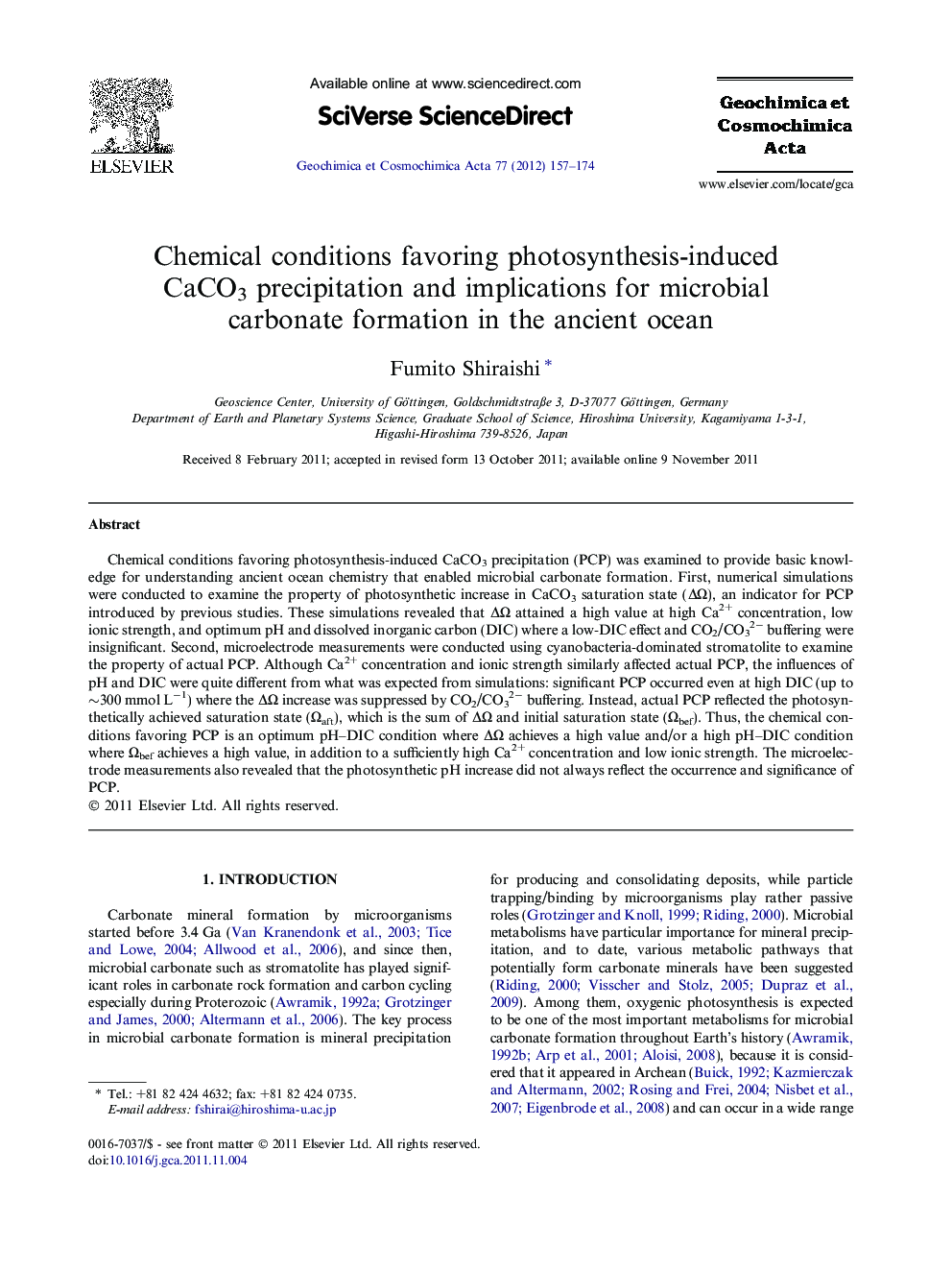| Article ID | Journal | Published Year | Pages | File Type |
|---|---|---|---|---|
| 6439353 | Geochimica et Cosmochimica Acta | 2012 | 18 Pages |
Abstract
Chemical conditions favoring photosynthesis-induced CaCO3 precipitation (PCP) was examined to provide basic knowledge for understanding ancient ocean chemistry that enabled microbial carbonate formation. First, numerical simulations were conducted to examine the property of photosynthetic increase in CaCO3 saturation state (ÎΩ), an indicator for PCP introduced by previous studies. These simulations revealed that ÎΩ attained a high value at high Ca2+ concentration, low ionic strength, and optimum pH and dissolved inorganic carbon (DIC) where a low-DIC effect and CO2/CO32â buffering were insignificant. Second, microelectrode measurements were conducted using cyanobacteria-dominated stromatolite to examine the property of actual PCP. Although Ca2+ concentration and ionic strength similarly affected actual PCP, the influences of pH and DIC were quite different from what was expected from simulations: significant PCP occurred even at high DIC (up to â¼300 mmol Lâ1) where the ÎΩ increase was suppressed by CO2/CO32â buffering. Instead, actual PCP reflected the photosynthetically achieved saturation state (Ωaft), which is the sum of ÎΩ and initial saturation state (Ωbef). Thus, the chemical conditions favoring PCP is an optimum pH-DIC condition where ÎΩ achieves a high value and/or a high pH-DIC condition where Ωbef achieves a high value, in addition to a sufficiently high Ca2+ concentration and low ionic strength. The microelectrode measurements also revealed that the photosynthetic pH increase did not always reflect the occurrence and significance of PCP.
Related Topics
Physical Sciences and Engineering
Earth and Planetary Sciences
Geochemistry and Petrology
Authors
Fumito Shiraishi,
